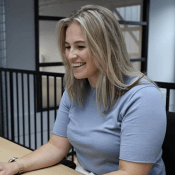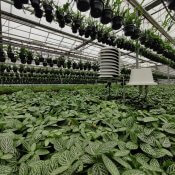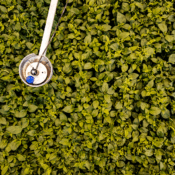How 30MHz facilitates precision agriculture
According to the Institute of Agriculture and Natural Resources, agricultural producers have quickly adopted precision agriculture technologies in recent years. Among them are digital soil mapping, vertical farming, hydroponics, drones and wireless sensor platforms. Business Insider even considers wireless sensors to account for more than half of fifteen emerging innovations in agriculture. Here at 30MHz we’ve successfully created accessible sensor-driven solutions for this innovative industry.

Image from Modern Farmer
Sensors and data analytics in agriculture
30MHz’s wireless sensors and multi-functional dashboard (see Fig1) help you get real-time data on the agricultural environment. This lets you translate key information into concrete decisions. The 30MHz sensor toolkit can withstand almost any kind of condition, like high temperatures and humidity, but also functions in cold storage rooms. Next to that it’s very flexible with regards to positioning, so no data is out of reach whether it’s remote sensing or up close. With an internet connection at hand It is easy to set up a sensor network without any installation costs.

Fig1: 30MHz’s intuïtive analytics dashboard, with in this case a comparison between temperature and humidity values over a 2 day timespan.
Get in contact with us for more information or sign up for our newsletter!
How does sensor technology work in real-world agriculture?
Well, you tell us what kind of data you need and together we’ll look into the sensors that help you get that data. The 30MHz Sensor Toolkit contains proven concepts like temperature, humidity or CO2 sensors. Next to these, a customized solution is always an option.
For example, in the case of a Dutch pepper grower 30MHz jointly developed a sensor which can measure the temperature of a pepper from a very close range. When a pepper gets too hot, it might ‘burn’. Causing it to look distasteful and no longer meet quality standards.
For the Proeftuin Zwaagdijk it’s essential to continuously measure the temperature, relative humidity and CO2 in their green houses. The 30MHz Toolkit gives real-time insight in local environmental conditions.
Scale at your own pace
The ROI on these kind of projects is evident but 30MHz understands that investing in new technology can be an expensive issue. However, unlike many companies who offer two levels of data storage and analytics, or data and tool lease plans, 30MHz gives you the option of a monthly subscription per sensor without any strings attached. This way you can scale at your own pace and ‘test run’ at low cost.
Any hardware that you buy will be yours forever, and so will the data. The value of data in the agricultural data might be most underrepresented. 30MHz’s stance is that all data belongs to it’s user. In other words: 30MHz customers have full ownership and can do with it whatever they want; i.e. create models, perform deep analytics or even sell their data to help others improve their businesses.


30MHz is typing… Our extended support team is ready to chat!
At 30MHz we think it’s important that our users can use our platform in an optimal way. At times you may have questions and you would like some help from our support team. Email and our support page filled with helpful articles were your go to’s. But we thought it was time for something extra… ...Read more
New 30MHz connect casing: How we protect your tech
To make sure your dataflow is fully protected, 30MHz introduces a new connect casing: waterproof, dust proof and even resistant to hits. This special shield will last longer and ensure a reliable dataflow from the connected sensor. What does that full protection mean? That’s what we will explain in this article. Watertight: resistant to wetness ...Read more
Most popular sensors for your greenhouse
As a grower, you know that optimal crop development starts with precise monitoring of your cultivation environment. But how do you transform raw data into actionable insights for your crops? This is where our wireless sensors and the 30MHz platform come together. Our sensors measure essential variables such as VPD, dew point, moisture deficit, EC, ...Read more



